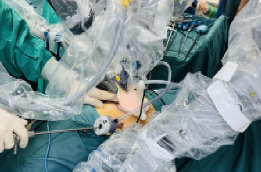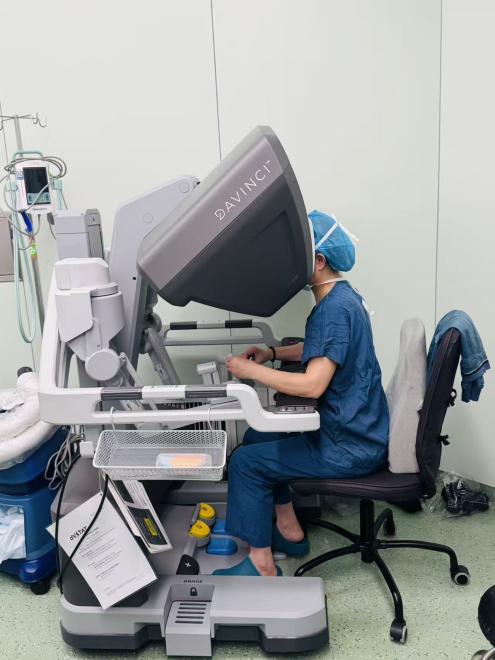On November 2, the Department of Kidney Transplantation at the First Affiliated Hospital (FAH) of Xi’an Jiaotong University (XJTU), in collaboration with Kunming First People’s Hospital, successfully completed two pairs of related living-donor, robot-assisted kidney transplant procedures, filling the gap in this technique in Shaanxi Province.
The donors and recipients comprised a mother-son pair and a father-son pair. All candidates completed comprehensive preoperative evaluations and ethics approvals. Both recipients were obese, and waiting for weight reduction to an ideal range would have prolonged the treatment course. Conventional open kidney transplantation entails greater surgical trauma and longer recovery, and obesity limits exposure along the surgical approach, posing major challenges for vascular and ureteral anastomoses. By contrast, robotic surgery provides magnified, high-definition three-dimensional visualization and allows precise dissection and suturing at flexible angles within confined spaces, reducing complications, accelerating recovery, and maximizing preservation of renal function. Accordingly, after multidisciplinary discussion, Ding Xiaoming, Director of the Department of Kidney Transplantation, decided to adopt a fully minimally invasive strategy of robotic donor nephrectomy plus robotic graft implantation.

That morning, the operations proceeded as planned. With the robot’s crisp visualization and agile instrument arms, the team rapidly completed donor kidney procurement, followed by meticulous back-table trimming and cold perfusion. For the recipients, 1-cm skin incisions were used to establish working ports. After full mobilization of the iliac vessels, the graft was introduced through a 5-cm abdominal incision, and the vascular anastomoses and ureteroneocystostomy were completed precisely under robotic assistance. Upon restoration of blood circulation, the graft kidneys showed robust perfusion with satisfactory urine output. All four procedures were completed successfully, with an operative time of about 2 hours and estimated blood loss of less than 50 mL.

The procedures received full support from the hospital’s Department of Anesthesiology and Perioperative Medicine. Clinical staff gave up their holiday rest, with dedicated teams handling anesthesia and instrument coordination to ensure the seamless conduct of surgery. At present, all four patients are in stable condition. The donors are about to be discharged, and the recipients’ renal function has essentially returned to normal.
This technique integrates cutting-edge kidney transplantation with modern technology. Through minimally invasive approaches, it minimizes donor trauma, and its precise operative technique makes it particularly suitable for patients with obesity or suboptimal physical condition, significantly reducing the risk of complications and expediting recovery for both donors and recipients.
